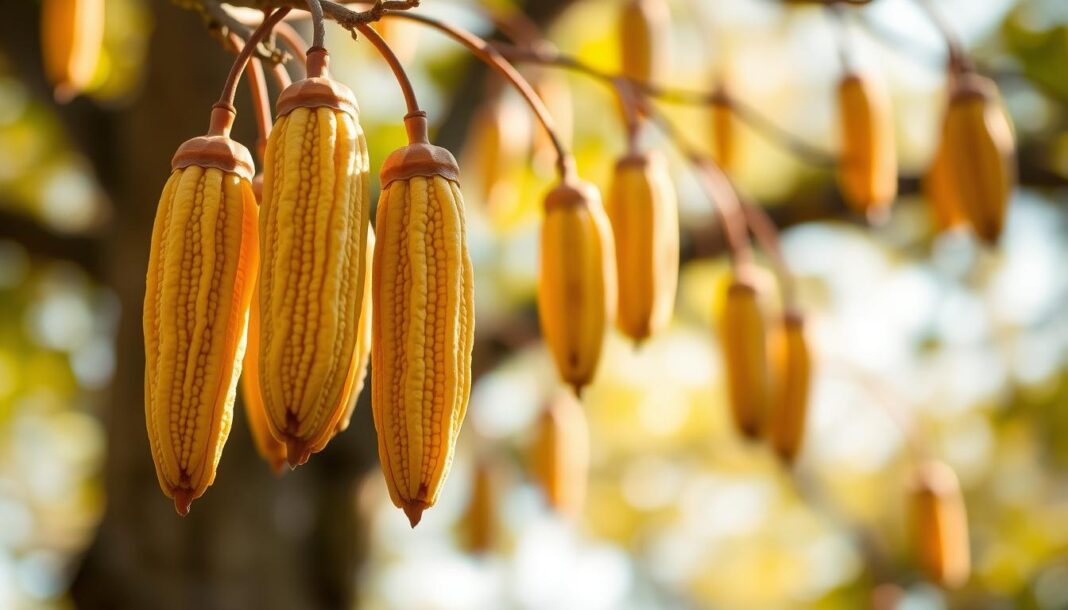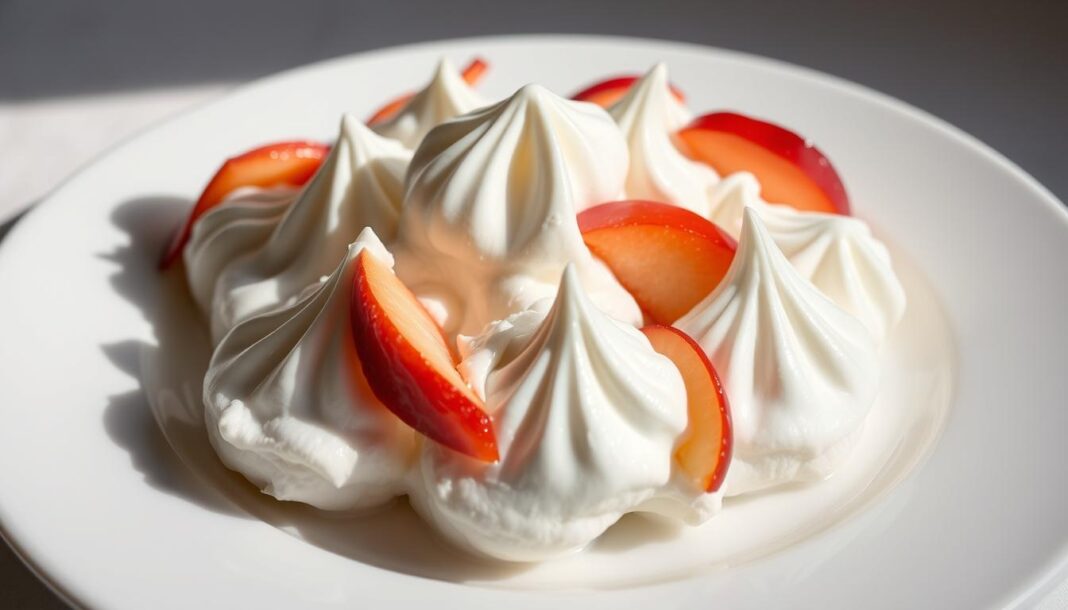Growing up on the American prairie, we were surrounded by edible plants, yet many native species were often overlooked for their potential.
The honey locust (Gleditsia triacanthos), with its thorny branches and trunks, is one such example. However, its pods contain a sweet, orange “goo” between the seeds, earning it the “honey” name.
At Historical Foods, we’ve been exploring the culinary potential of the locust tree, utilizing its pods in various dishes. Through extensive testing, we’ve developed reliable recipes that showcase the unique properties of honey locust seeds.
We’ll share our tested recipes, along with essential information on harvesting, preparation, and nutritional benefits, making it accessible for home cooks to incorporate this sustainable ingredient into their cooking repertoire.
Key Takeaways
- Discover the culinary potential of the honey locust tree
- Learn how to harvest and prepare honey locust pods
- Explore unique recipes featuring honey locust seeds
- Understand the nutritional benefits of incorporating honey locust into your diet
- Expand your cooking repertoire with sustainable, local ingredients
Understanding Honey Locust as an Edible Ingredient
Honey locust pods, with their sweet pulp and nutritious seeds, represent an underutilized resource in American cuisine. We explore the potential of these pods as a valuable ingredient in modern cooking.
The Overlooked Food Source in American Landscapes
The honey locust tree, native to North America, is often seen as merely a decorative or shade tree. However, its pods have been a food source for centuries, particularly in traditional Native American cuisine. These pods are rich in sugar, making them a valuable resource for various culinary applications.
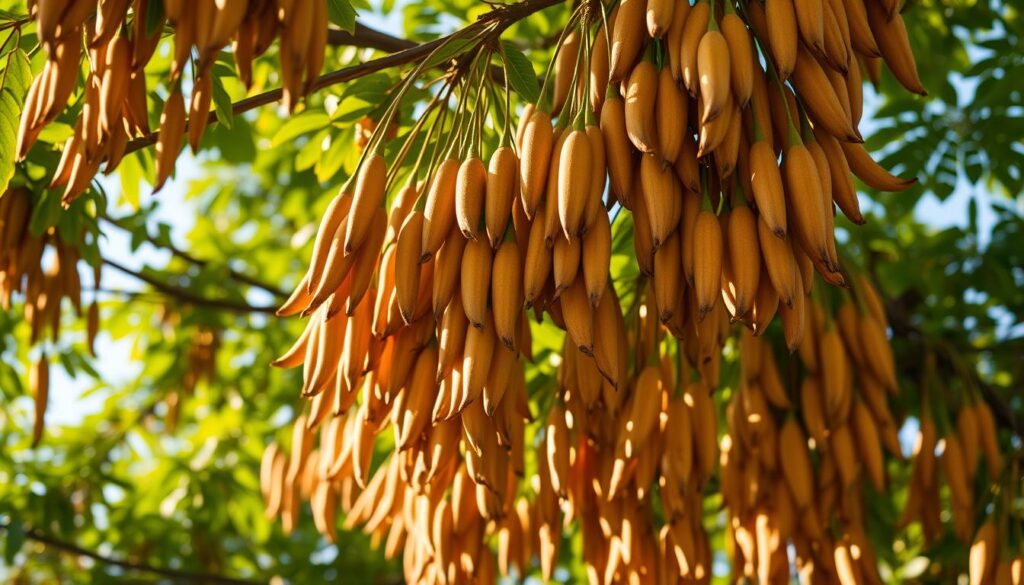
Nutritional Profile: Sugar, Protein, and Minerals
The nutritional profile of honey locust pods is impressive, with the sweet pulp surrounding the seeds containing between 12% and 42% sugar. The seeds themselves are edible after soaking and cooking, offering approximately 30% sugar and 10-24% protein. They are also rich in minerals such as calcium and phosphorus, making them a nutritious addition to a balanced diet.
Our analysis highlights that the seeds within the honey locust pods are not only a good source of protein but also contain significant levels of essential minerals. This makes honey locust a valuable ingredient for those looking to incorporate more sustainable and nutrient-dense foods into their diet.
Harvesting and Preparing Honey Locust Pods
Harvesting honey locust pods requires a combination of knowledge and caution. The honey locust tree, known for its durable and lengthy thorns, demands respect when it comes to collecting its edible pods.
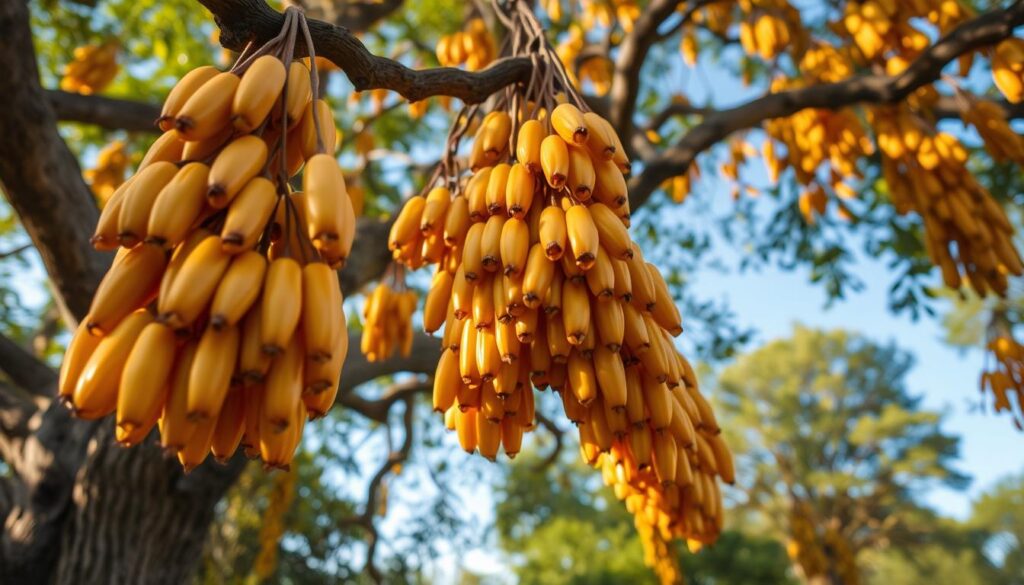
Seasonal Harvesting Guide: August to March
The honey locust pods are available from August through March, offering a lengthy harvesting season. While both green and ripe pods are technically edible, green pods must be cooked before consumption to neutralize potential irritants. Ripe pods, on the other hand, can be harvested throughout the winter months.
Safety First: Navigating Thorns and Proper Pod Selection
When harvesting, safety precautions are essential due to the tree’s formidable thorns, which can extend up to 12 inches. We recommend using long-handled pruning tools to collect pods from higher branches. Proper pod selection is crucial; look for pods that are brown to dark brown, intact, and free from mold or insect damage. The pulp inside should have a pleasant aroma similar to caramel.
Our Tested Honey Locust Recipes
Exploring the culinary potential of honey locust, we’ve crafted recipes that bring out its natural sweetness and depth. Our tested recipes not only showcase the versatility of honey locust but also provide practical guidance for incorporating this ingredient into your cooking and baking.
Traditional Locust Bean Stew with Seasonal Vegetables
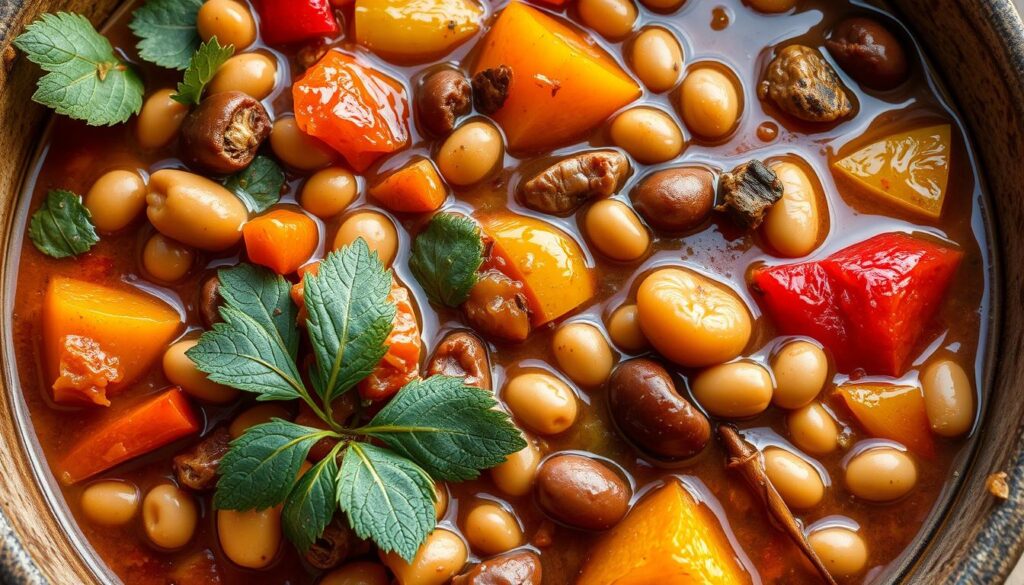
Ingredients and Preparation Steps
To make our traditional locust bean stew, start by gathering fresh or dried honey locust pods. The pods contain a sweetish-sour pulp that is perfectly edible and delicious. Ensure you avoid the maroon-brownish outer skin due to its high tannin content. Combine the pulp with seasonal vegetables such as carrots, potatoes, and onions, and simmer in a broth seasoned with herbs and spices.
The preparation involves rehydrating dried pods, if using, and then simmering all the ingredients together until the vegetables are tender. This stew is a comforting and flavorful way to enjoy honey locust.
Flavor Profile and Serving Suggestions
The flavor profile of this stew is characterized by the unique sweet and sour taste of the honey locust pulp, complemented by the earthiness of the vegetables. Serve hot, garnished with fresh herbs, and consider pairing it with crusty bread for a satisfying meal.
Sweet Honey Locust Pod Caramel

Working with the Natural Sweetness
The natural sweetness of honey locust pods makes them an excellent candidate for desserts like caramel. By cooking down the pulp, you can create a rich, toffee-like caramel that is both delicious and unique.
To make the caramel, carefully extract the pulp from the pods and cook it down with a touch of sugar and cream until it reaches the desired consistency.
Pairing with Other Ingredients
This honey locust pod caramel pairs well with a variety of ingredients, such as vanilla ice cream, nuts, or even as a topping for yogurt or oatmeal. Its unique flavor adds a sophisticated twist to traditional desserts.
Ground Locust Seed Flour for Baking

Preparation Method
To make ground locust seed flour, start by drying the seeds from the honey locust pods. Then, grind them into a fine flour using a grain mill or high-powered blender. This flour can be used as a partial substitute in baking recipes, offering a nutty flavor and additional nutrition.
We’ve found that substituting up to 25% of conventional flour with locust seed flour works well in most recipes, especially in hearty baked goods like cookies, muffins, and quick breads.
Substitution Guidelines in Traditional Recipes
When using ground locust seed flour, keep in mind that it has a lower gluten content than traditional wheat flour. Therefore, recipes may benefit from additional binding agents like eggs or ground flaxseed. Also, be aware that locust seed flour typically requires about 10% more liquid than conventional flour.
The natural sweetness of the seeds from the honey locust tree can also allow for reducing added sugars in your recipes, providing valuable information for those monitoring their sugar intake.
Conclusion: Rediscovering Native American Food Traditions
The lack of preserved Native American recipes, particularly those featuring locust beans, is a significant cultural oversight. Our exploration of honey locust recipes is a step towards rediscovering and honoring these overlooked traditions.
By adopting sustainable harvesting and preparation methods, we connect with the practices developed by indigenous people over centuries. Incorporating the honey locust tree and its pods into our diets preserves cultural heritage and ecological wisdom.
We encourage readers to respect the origins of these recipes while adapting them to their preferences, thus participating in the revival of traditional food knowledge.
